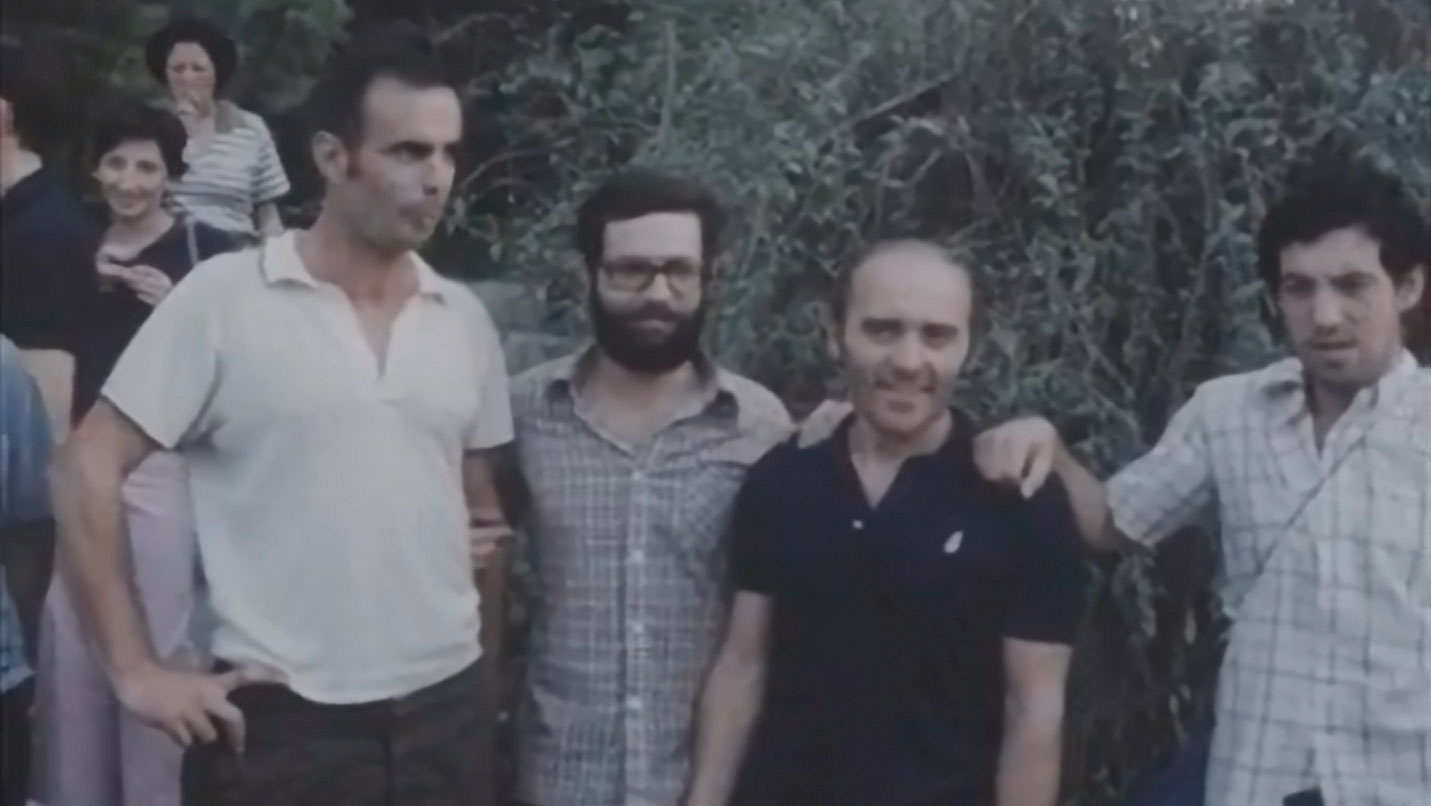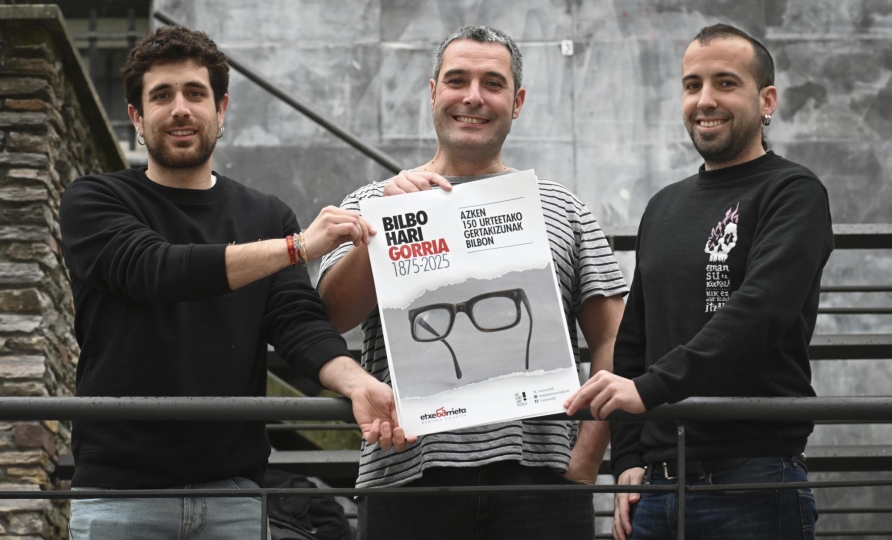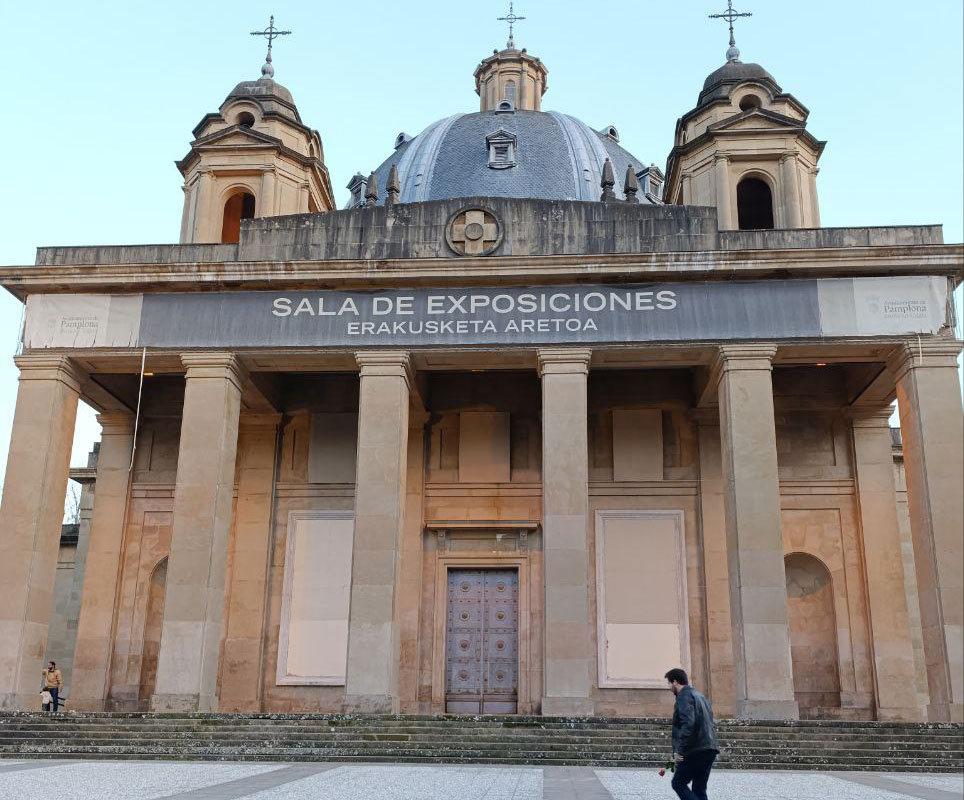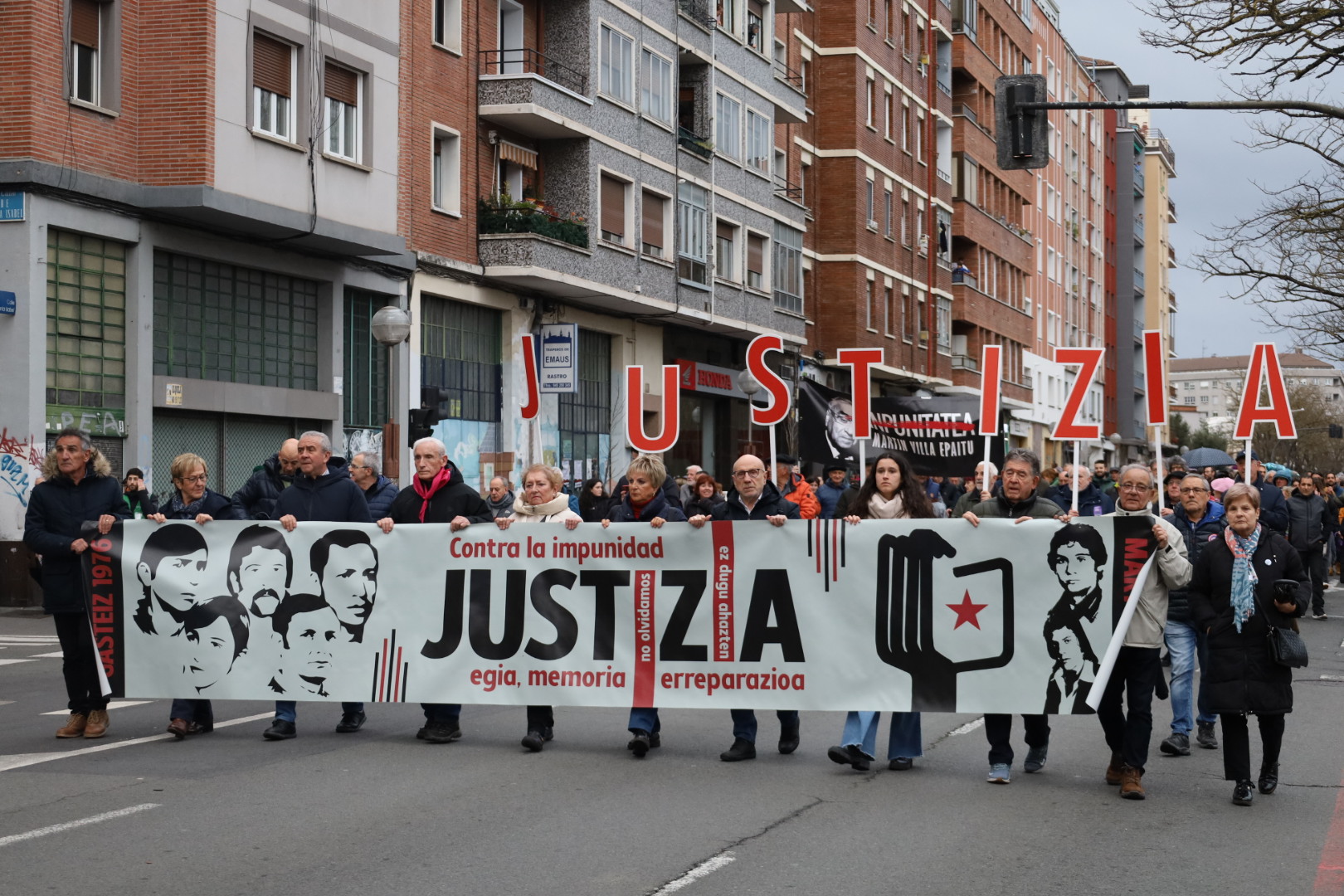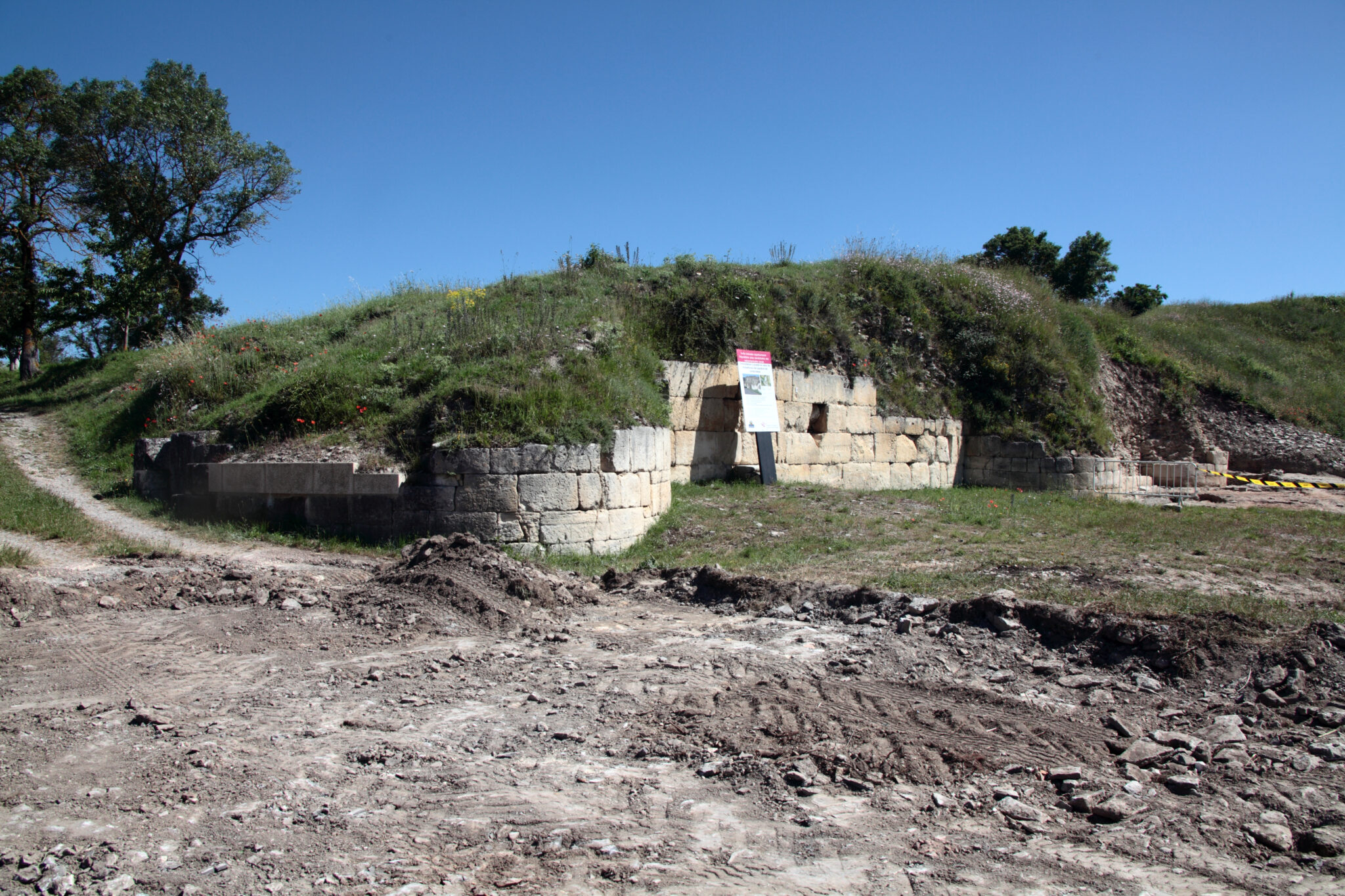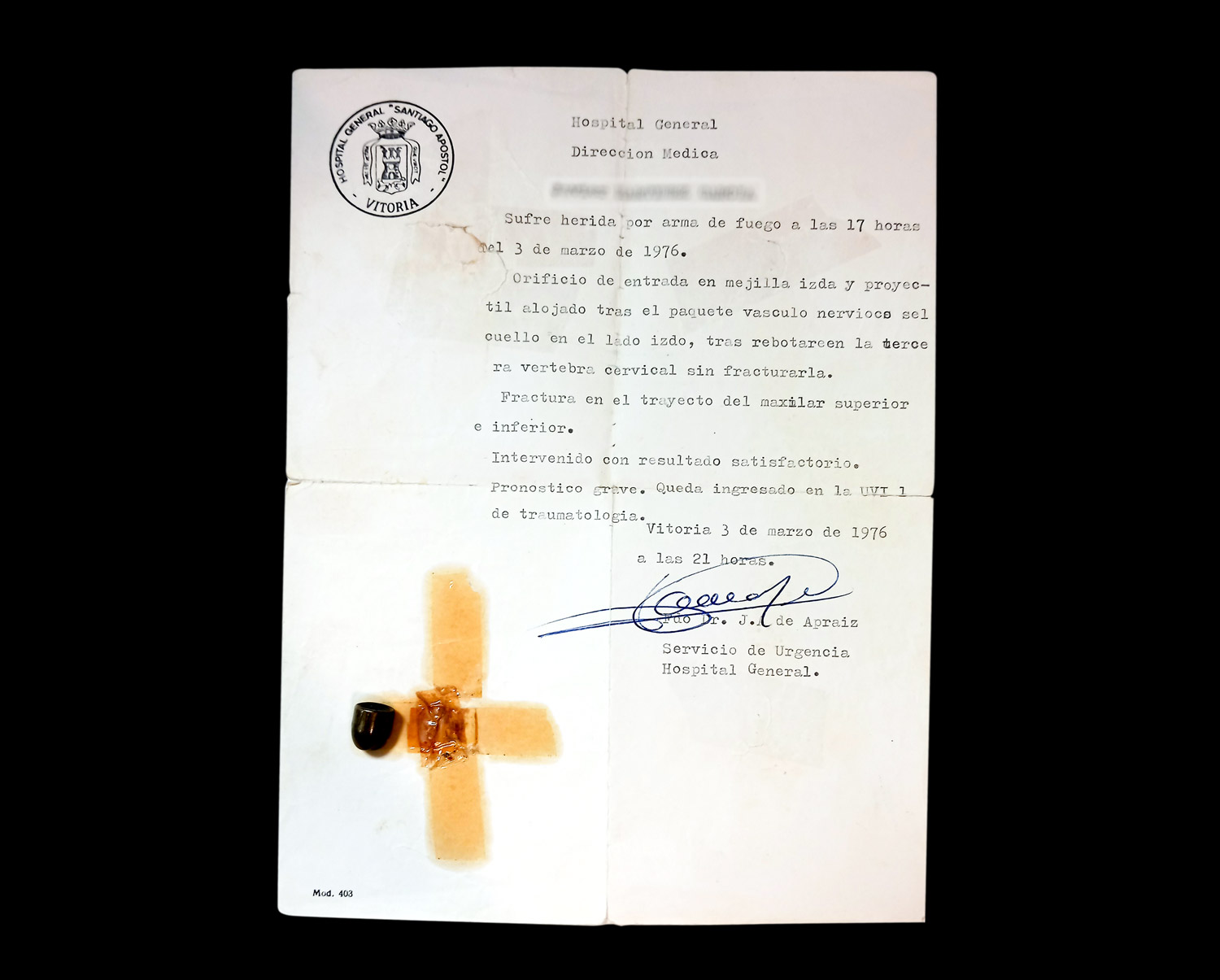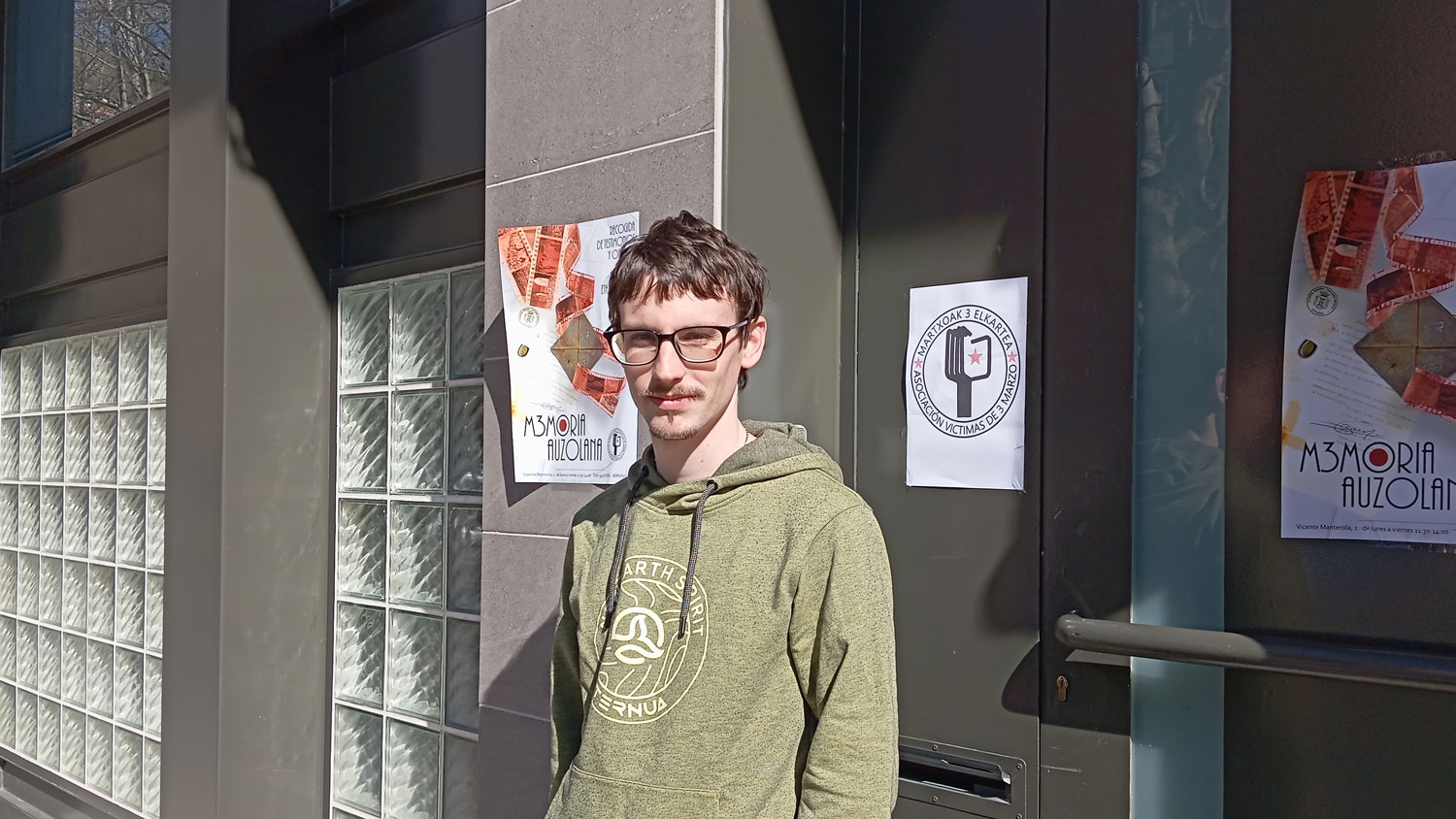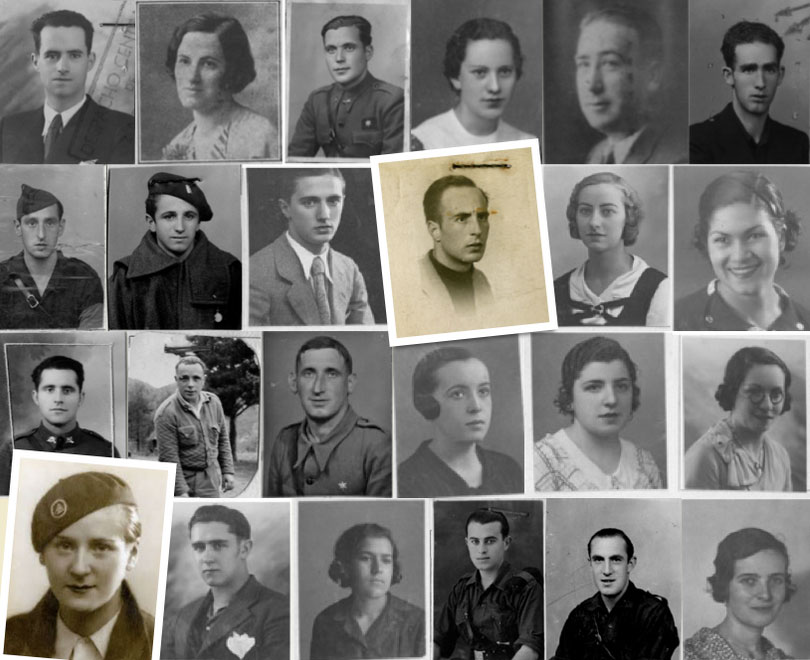Return of Altzoko Handia
- 160 Altzoko Handia fired the world with his large bones on 20 November. The man who turned around on Europe’s brilliant tablates ended himself humbled in his home, in the Ipintza Haundi farmhouse in Altzo Azpi. Subsequently, his memory was lost in brief oral histories and brief written quotes. But in recent years the image of altzotarra has been reopened to the four winds, at the expense of the magic of celluloid, new research and the citizens' initiative. Miguel Joaquín Eleizegi returns doing the diosal, with his large bones that they discovered last year.

I was buried in the graveyard where the hill rises next to the church”, can be read by the tourist who approached Altzo, in one of the panels placed by the town. On November 20, 1861, Miguel Joaquín Eleizegi Ateaga, Altzoko Handia, the largest person ever seen in Euskal Herria, and probably in many other European lands, died. The acromegaly measured a length of 2.42 cm, according to the last stripe recorded in the portico of San Salvador de Altzo, and its bones had to bear a weight of 17 basins (203 kilos) at the time it was bigger.
Our Haundie, as they call him in Altzo, died affected by the ailments caused by the gigantic one, probably by the affection of his lumpy heart or his lungs, but before he made a will and left 500 masses paid. The day after his death, they performed the funerals and transferred his body from the dwelling Ipintza Haundi to the tomb of the relatives of the cemetery.
“Now I’m not. I lost my exaggerated, lost my belly and lost my hands and all my parts.” For many years it has been thought that the bones of the Great Altzo were stolen, sold, hidden in some foreign museum. It was just a legend that has profaned his memory. On August 14, 2020, archaeologists in Aranzadi discovered Miguel Joaquín, or his pieces, in the Osario of San Salvador.
.jpg)
The expectation that has emerged in recent years around the Great Altzo has been most revealed by the mysterious end that fit into its tragic life. Alive, the Basque giant Eleizegi had a global reputation, but with the bones, interest disappeared because modernity needed to cure other challenges, to surprise other monsters. In the century and a half just a few mentions in the old books, or some stone relief for children to lose their small feet in the cover of their large plant, such as the one next to their home, by Juanito Lope in 1968. But now passion emerges again.
From the tablates to the plaza and to the big screen
The time to return to the world of citizenship begins with the decade of 2010 in Ipintza. That year, the opera of the youngest, El Grande de Altzo, was premiered at the Altzo City Hall, produced by the Topic, the International Puppet Center of Tolosa. Directed by the composer Altzotarra David Azurza and performed in collaboration with the writer Koldo Izagirre, the work has been offered not only in Euskal Herria, but also in Mexico and elsewhere. “What is the world like?” asked by the neighboring chameleon of the children’s opera, “it’s beautiful in its ugly.”
Then, based on the life of the Great Altzo, Jon Garaño and Aitor Arrangi started projecting the film, and the fictional feature film Handia, which took hold in 2017, has given a new dimension to the character, not only on the outside, but also at home. In Altzo, for example, a reception centre and interpretation centre have been built for tourists who have come to the people animated by the film. And before that, they have also made a journey through different panels, with texts by Izagirre who has studied most of the characters and the work of Juanba Berasategi: “The road is sitting, the sign is at the church door,” he says on one of the panels. The journey takes the walker to the Hague of Imaz, a simple one that has been cultivated and pampered by the famous bertsolari Manuel Antonio Imaz, 200 years old, 22 meters high and 30 meters of cup: “You are long, but this will be long and wide!” he told Miguel Joaquín.

Imaz did not place any verse to the Grande de Altzo. The truth is that neither in verses, nor in songs, nor in literature, nor in folklore is almost nothing shown to us of it. In its present flowering it has become a source of inspiration for creation and popular theatres, tales of bertsos, illustrated with stories, guided tours… The Provincial Council of Gipuzkoa has also published a historical book in 2019: Great Altzo. A mythical Basque (although totally real) in 19th-century Europe. The Doctor in History of the Complutense University of Madrid, Luis Ángel Sánchez Gómez, wanted to disassemble several topics that were disseminated with the Grande de Altzo and provide new data. Because, even if it sounds like a lie, 160 years later, the story of Miguel Joaquín Eleizegi was still unknown to us.
Altzo to Tolosa, from Tolosa to the world
Born on July 10, 1818, Miguel Joaquín was the sixth in ten stepbrothers of a large family of farmers in Altzo. At the age of ten, her mother Maria Antonia Ateaga died five days after delivery. Those years of adolescence passed them into a small town dominated by religion, where the echo of the triscans provoked by Wellington and others in 1813 still came through the cities.
It seems that until the age of 18-20, the size of Miguel Joaquín did not arouse attention, but it seems that he had some disease that led to acromegaly, and from there he began to grow and grow without interruption. In the village they naturally saw the greatness of the neighbor, since they knew him since he was a young boy, but when he went down to the fair of Tolosa to sell baskets or onions, on the street he was surprised by his height. The body, in addition, was well “provided” by that inanimate boy, unlike many other people suffering from gigantism, which caused greater surprise. Sánchez Gómez points out that the first mention in the press was made by the Madrid newspaper El Defender del Consumers in 1843, at the age of 25, and by that time it was already measuring 2.09 meters.
.jpg)
At that time, finding a man over two meters on the street was not normal, in the population fed corn flour and beans on most days of the year. “I ate like three and drank like four. That would be, of course,” Miguel Joaquín tells us, from the panel located next to Ipintza Haundi.
That year he signed a contract with the association formed by José Antonio Arzun de Lekunberri and several millionaires from Tolosa and San Sebastian to show his body in and outside Euskal Herria. The exhibitionism of amazing people was a business in the 19th century show world, like businessman Phileas Taylor Barnum, who had a great success with the museum performing shows in New York. Among the conditions, Eleizegi asked to be able to attend Mass on Sundays, pay for smoking and never have to do so at sea.
In a few months, however, the contract is rescinded and starts on its own demonstrations with the help of his father and his older brother, Juan Martín. Thus, we will see it first in Madrid, passing by a real in the rented coarcts, with the Turkish turbo as the first drawing for a Madrid magazine, and later in the famous hotels and cafes of Lisbon, London and Paris, never in the circus.
In the city of lights, for example, I lit the cigarette with gas lamps hanging from the roof of the Café Mulhouse. Sometimes he will dress as a general, sometimes he will be placed next to the pulgarcytes, even with the typical Kolibri princesses in his hands, or the spectator will pass through his legs, such as Le géant espagnol Eleiceigui, or under the name of Basque giant Mr. Eleicegui. On these trips, the boy of Altzo Azpi will also be taken to the kings, as the old plate of the church recalls: “See the fact to the king of Spain and Portugal and to the king of England and France.”
.jpg)
Miguel Joaquín and his brother Juan Martín will conduct their last great tour of France. In 1855 they will reach the border with Flanders, in the city of Saint Omer. They're a thousand kilometers away from their house. They will then return to the Great Ipintza with a small amount of money, and there Altzoko Handia will spend his last years, away from the world of the show, and that the press no longer reports the Basque geant. By then he already has a will made, his great bones already tell him about the flight of time. After death, our elder will go down in history, but what about her?
Voracious, religious, humble, poor man…
“The people of Alzo-azpi also have a son, even if it is not for what I am going to put here, for his intrinsic qualities, which is Joaquín de Eleizegi.” This is what the Zaldibian historian Juan Ignacio Iztueta wrote, in the legend of the province of Guipúzcoa, Altzoko Handi, in 1847, when the altzotarra was still not well known. This text is the first written reference in Basque about Eleizegi in a book. “He has found nothing to compare to just one, or to pass over the armpit, so they have given him the legal and legitimate name of the Basque Giant.”
Later, in 1896, Serapio Mujika wrote a more in-depth article in the journal Euskal-Erria, based on oral testimonies. And then researchers will comment everywhere, as in the 1970s Jesus Elósegui and Father Gandarias will publish two works, but, according to Sánchez Gómez, they will only repeat the 19th century beliefs: the figure of the majestic, religious, humble and poor man will prevail.
What happened to him when he was taught in that museum in London by the famous giant James Toller, “long and large in the empty bone”? Were they going to do the same with him? But no. He was not sold to immortalize the glass, and perhaps that is why he returned to his hometown, where he was born small and when it was normal to have a dignified death.
The judgment that he died poor in the last years of his life is surely related to the petition sent in 1859 to the General Boards of Gipuzkoa that, after suffering a hunt, he asked for help from a pension saying that he was “in a situation of misery and unable to start work”. It rejects. Sánchez Gómez belies him in his work and says that the economic situation of Altzoko Handia was not disastrous. On the one hand, because my father inherited two dwellings – XIX. While the majority of Gipuzkoan families of the twenty-first century lived under a tenant regime, the documents in the archives show that they had won money with shows, even lend them to relatives and relatives, and that they were also able to buy a car for their travels, a luxury in those times.
And what do we know about its character? We have been told repeatedly that it was humble and shy, "like all phenomena, exploited in the glass bell to store the cheese," as the literary magazine Musée des Famililes of Paris said. But here too, the historian is clear that it was not used: “If I had not wanted to continue in that travelling life (...) we are sure that I would put an end to it. But he didn't. And he didn’t do it because he made a lot of money, without making any effort.” He says he also made important decisions on his own, such as changing the will in favor of the father a few days before he died.
What we do not know is how she felt within her large body, if she really considered herself a “nature abortion,” as Isabel II wrote to the queen of Spain. What did you think when you saw the bronze molds of your hands on sale in a showcase of the Paris Stock Exchange neighborhood? What happened to him when he was taught in that museum in London by the famous giant James Toller, “long and large in the empty bone”? Were they going to do the same with him? But no. He was not sold to immortalize the glass, and perhaps that is why he returned to his hometown, where he was born small and when it was normal, to have a dignified death.
Migel Joakin Eleizegiren hezurren aurkikuntza ez zen izan ikerketa historiko edo txosten zientifiko baten emaitza, kafe baten bueltan izandako elkarrizketetatik Karlos Almorzak ateratako ondorioa baizik. Hala kontatu du Aranzadiko arkeologoak Ataria-n. Altzoko Handiaren hezurrak ostu egin zituztela zioen zurrumurru aski zabalduaz udaleko langileei galdetuta, “inork, inon eta inoiz ez zuela datu txikiena hori baieztatzeko”.
Eleizegiri buruz idatzi duten historialariek ere lapurretaren edo salmentaren teoria arbuiatu dute. Areago, Luis Ángel Sánchezek Gipuzkoako Aldundiarentzat idatzitako liburuan garbi esaten du: “Nire iritziz hondakinak lurpetik atera zituzten leinu etxearekin loturiko zendu berriei lekua uztearren (...)”.
Almorza Altzo Azpiko hilerrira gerturatu zenean, jabetu zen “erdi abandonatua” zegoela. Eleizegitarren hilobia eta hezurtegia lokalizatu zituen, eta horrela ekin zien 2020ko abuztuan indusketei. Hilobian bilatu ostean, hezurtegian aurkitu zuten Altzoko Handiaren hezurduraren zati handi bat, sorpresa handiz. “Hornoetan artrosi seinale mordo bat aurkitu dugu –azaldu zuen Lourdes Errasti Aranzadiko kideak– horrek esan nahi du gaitza oso aurreratua zuela eta min izugarria izango zuela bizitzan, horregatik kexatzen zen, horregatik bueltatu nahi zuen etxera”.
DNA probak egiteko laginak atera eta berriz hilobiratu zuten beti egon den tokian. Orduan, nondik nora datorkigu lapurretaren kontu hori? Almorzaren ustez ziurrenik Altzoko Handiaren aita, Migel Antonio Eleizegi, izan zen hamaika urte geroago bera hiltzean, semearen hezurrak kaxatik atera eta hezurtegian uzteko agindu zuena, “gorpua lapurrengatik babesteko lekualdatu zuten, Altzo Azpiko hilerrian gera zedin, berak nahi izan zuen bezala”.
.jpg)


Goian Mauro Saravia argazkilariak hezurrak ateratzeko unean ateratako irudiak. Aranzadiko kideak lanean; Pako Etxeberria auzitegi-medikua, Migel Joakin Eleizegirena izan daitekeen besahezurra konparatzen, Jon Garaño eta Aitor Arregi Handia filmaren zuzendariak ondoan dituela; Altzoko Handiaren hezurduratik aurkituriko zatiak Altzo Azpiko hilerrian, bere irudia atzean dela.
Hiru bideo dira (albiste barruan ikusgai). Batak jasotzen du, grebak antolatzea leporatuta, Carabanchelen espetxeratu zituzten Jesús Fernandez Naves, Imanol Olabarria eta Juanjo San Sebastián langileak espetxetik atera ziren unea, 1976ko abuztuan. Beste biak Martxoak... [+]
Otsailean bost urte bete dira Iruña-Veleiako epaiketatik, baina oraindik hainbat pasarte ezezagunak dira.
11 urteko gurutze-bidea. Arabako Foru Aldundiak (AFA) kereila jarri zuenetik epaiketa burutzera 11 urte luze pasa ziren. Luzatzen den justizia ez dela justizia, dio... [+]
Bilbo Hari Gorria dinamikarekin ekarriko ditu gurera azken 150 urteetako Bilboko efemerideak Etxebarrieta Memoria Elkarteak. Iker Egiraun kideak xehetasunak eskaini dizkigu.
33/2013 Foru Legeari Xedapen gehigarri bat gehitu zaio datozen aldaketak gauzatu ahal izateko, eta horren bidez ahalbidetzen da “erregimen frankistaren garaipenaren gorespenezkoak gertatzen diren zati sinbolikoak erretiratzea eta kupularen barnealdeko margolanak... [+]
79. urtean, Vesubio sumendiaren erupzioak errautsez eta arrokaz estali zituen Ponpeia eta Herkulano hiriak eta hango biztanleak. Aurkikuntza arkeologiko ugari egin dira hondakinetan; tartean, 2018an, gorpuzki batzuk aztertu zituzten berriro, eta ikusi zuten gizon baten garuna... [+]
Luxorren, Erregeen Haranetik gertu, hilobi garrantzitsu baten sarrera eta pasabide nagusia aurkitu zituzten 2022an. Orain, alabastrozko objektu batean Tutmosis II.aren kartutxoa topatu dute (irudian). Horrek esan nahi du hilobi hori XVIII. dinastiako faraoiarena... [+]
AEB, 1900eko azaroaren 6a. William McKinley (1843-1901) bigarrenez aukeratu zuten AEBetako presidente. Berriki, Donald Trump ere bigarrenez presidente aukeratu ondoren, McKinleyrekiko miresmen garbia agertu du.
Horregatik, AEBetako mendirik altuenari ofizialki berriro... [+]
Andeetako Altiplanoan, qocha deituriko aintzirak sortzen hasi dira inken antzinako teknikak erabilita, aldaketa klimatikoari eta sikateei aurre egiteko. Ura “erein eta uztatzea” esaten diote: ura lurrean infiltratzen da eta horrek bizia ekartzen dio inguruari. Peruko... [+]
1936ko Gerran milaka haurrek Euskal Herria utzi behar izan zuten faxisten bonbetatik ihes egiteko. Frantzia, Katalunia, Belgika, Erresuma Batua, Sobietar Batasuna eta Amerikako herrialdeetara joandako horien historia jasotzeko zeregin erraldoiari ekin dio Intxorta 1937... [+]
49 urte eta gero Espainiako Poliziak Gasteizko Maria Sortzez Garbiaren katedralean eraildako bost langileak oroitu dituzte beste behin astelehen arratsaldean. Milaka pertsona batu dira Zaramagatik abiatutako eta katedralean amaitutako manifestazioan. Manifestari guztiek ez dute... [+]
Martxoaren 30erako Iruña-Veleia martxan, SOS Iruña-Veleia eta Euskeraren jatorria elkarteek manifestaziora deitu dute, Aski da! Argitu, ez suntsitu lelopean. Azken bi urteetan "hondeatzaileak sistematikoki eremu arkeologiko oso aberatsak suntsitzeko modu... [+]
1976ko martxoaren 3an, Gasteizen, Poliziak ehunka tiro egin zituen asanbladan bildutako jendetzaren aurka, zabalduz eta erradikalizatuz zihoan greba mugimendua odoletan ito nahian. Bost langile hil zituzten, baina “egun hartan hildakoak gehiago ez izatea ia miraria... [+]
Martxoak 3ko sarraskiaren 49. urteurrena beteko da astelehenean. Grebetan eta asanblada irekietan oinarritutako hilabetetako borroka gero eta eraginkorragoa zenez, odoletan itotzea erabaki zuten garaiko botereek, Trantsizioaren hastapenetan. Martxoak 3 elkartea orduan... [+]
Memoria eta Bizikidetzako, Kanpo Ekintzako eta Euskarako Departamentuko Memoriaren Nafarroako Institutuak "Maistrak eta maisu errepresaliatuak Nafarroan (1936-1976)" hezkuntza-webgunea aurkeztu du.











